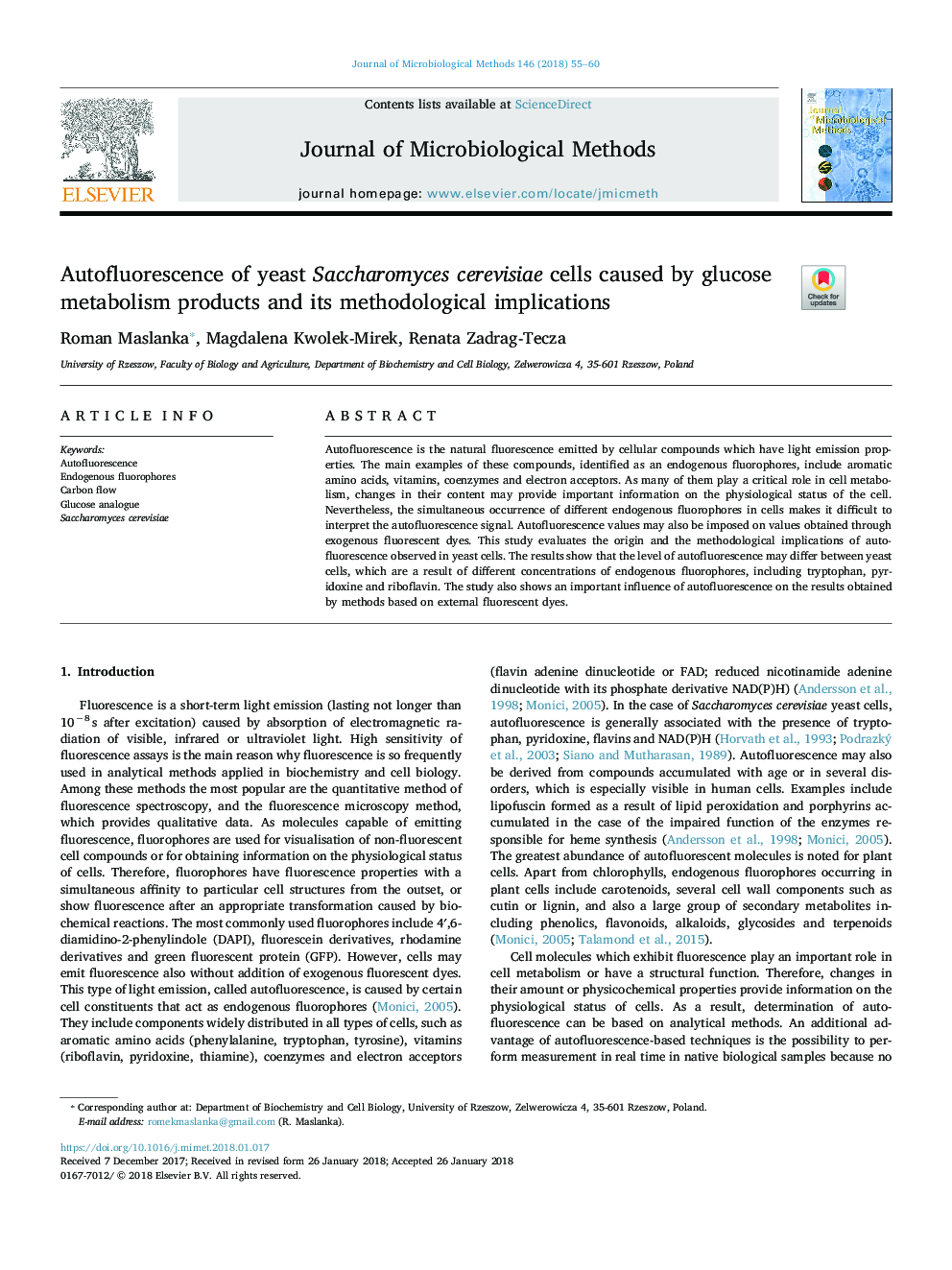| Article ID | Journal | Published Year | Pages | File Type |
|---|---|---|---|---|
| 8420501 | Journal of Microbiological Methods | 2018 | 6 Pages |
Abstract
Autofluorescence is the natural fluorescence emitted by cellular compounds which have light emission properties. The main examples of these compounds, identified as an endogenous fluorophores, include aromatic amino acids, vitamins, coenzymes and electron acceptors. As many of them play a critical role in cell metabolism, changes in their content may provide important information on the physiological status of the cell. Nevertheless, the simultaneous occurrence of different endogenous fluorophores in cells makes it difficult to interpret the autofluorescence signal. Autofluorescence values may also be imposed on values obtained through exogenous fluorescent dyes. This study evaluates the origin and the methodological implications of autofluorescence observed in yeast cells. The results show that the level of autofluorescence may differ between yeast cells, which are a result of different concentrations of endogenous fluorophores, including tryptophan, pyridoxine and riboflavin. The study also shows an important influence of autofluorescence on the results obtained by methods based on external fluorescent dyes.
Related Topics
Life Sciences
Biochemistry, Genetics and Molecular Biology
Biotechnology
Authors
Roman Maslanka, Magdalena Kwolek-Mirek, Renata Zadrag-Tecza,
